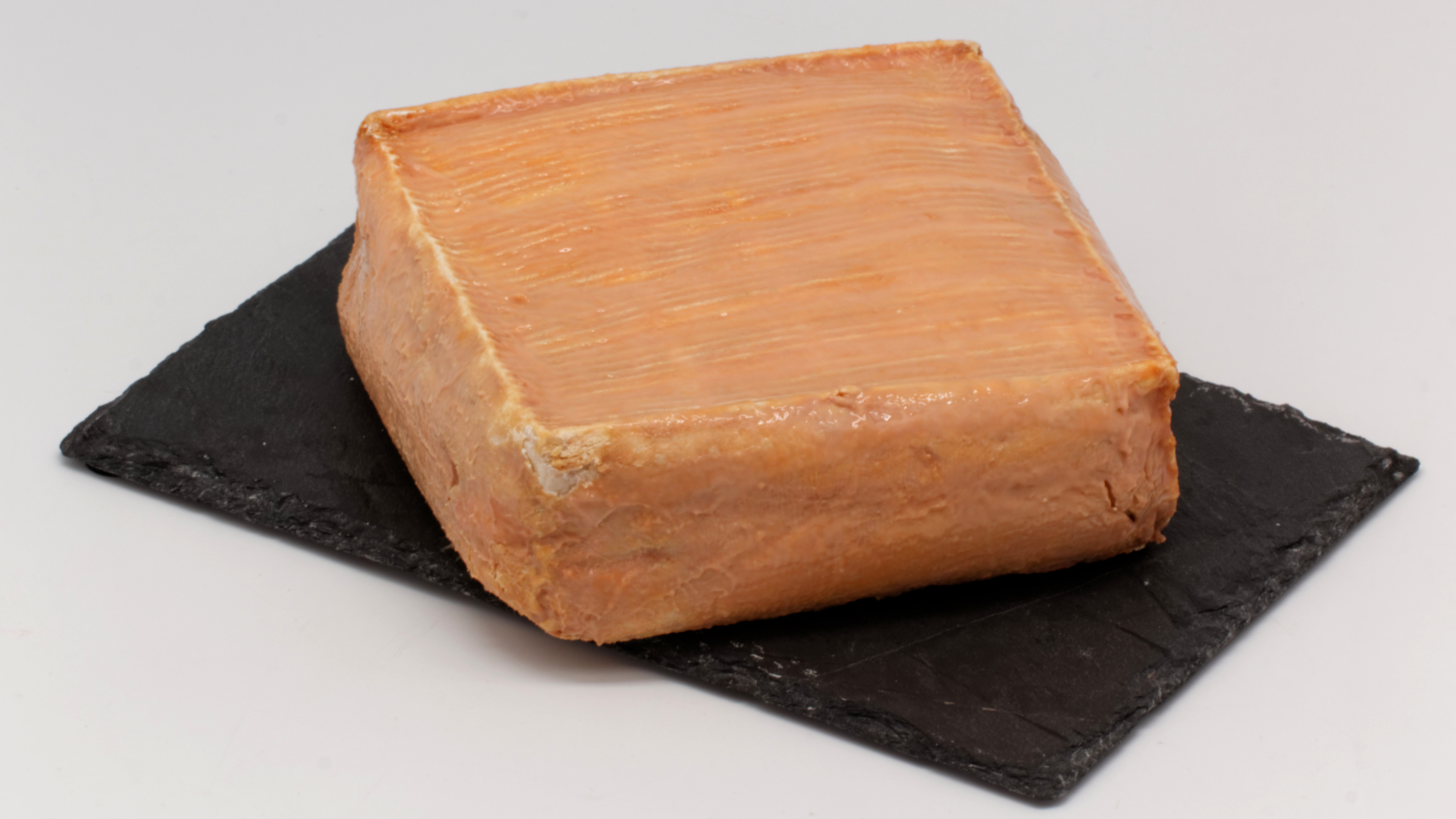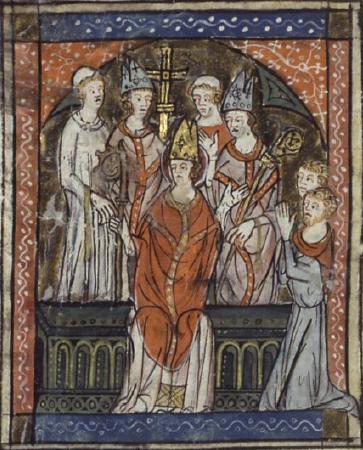|
Maroilles Cheese
Maroilles (), also known as Marolles, is a cow's-milk cheese made in the regions of Picardy and Nord-Pas-de-Calais in northern France. It derives its name from the village of Maroilles in the region in which it is still manufactured. The cheese is sold in individual rectangular blocks with a moist orange-red washed rind and a strong smell. In its mass-produced form it is around square and in height, weighing around In addition, according to its AOC regulations, cheeses eligible for AOC status can be one of three other sizes: *Sorbais – (3/4) 12-12.5 cm square, 4 cm high, 550 g in weight. ''ripening'': at least 4 weeks. *Mignon – (1/2) 11-11.5 cm square, 3 cm high, 350 g in weight. ''ripening'': at least 3 weeks. *Quart – (1/4) 8-8.5 cm square, 3 cm high, 180 g in weight. ''ripening'': at least 2 weeks. History Maroilles is often reported to have first been made in 962 by a monk in the Abbey of Maroilles. The cheese rapidly became famous throughout the region and ... [...More Info...] [...Related Items...] OR: [Wikipedia] [Google] [Baidu] |
Bienvenue Chez Les Ch'tis
''Welcome to the Sticks'' (, ) is a 2008 French comedy film directed and co-written by Dany Boon and starring Kad Merad and Boon himself. The film is the highest-grossing French film of all time at the box office in France. Plot Philippe Abrams is the manager of the French post office ('' La Poste'') branch in Salon-de-Provence, Bouches-du-Rhône, in southern France. He is married to Julie, whose negative character makes his life miserable. Philippe does everything to get a job at an office in Sanary-sur-Mer, on the Mediterranean coast, to make her happy. As it is perceived that the position will be acquired more easily if one is disabled, Abrams pretends that he is disabled – and is found out by the management. As punishment, he is banished for two years to Bergues, a town near Dunkirk in northern France. Northern France – and the Nord-Pas-de-Calais region in particular – is considered "the sticks" – a cold and rainy place inhabited by unsophisticated ''ch'tis'' who s ... [...More Info...] [...Related Items...] OR: [Wikipedia] [Google] [Baidu] |
Somme (department)
The Somme (; ) is a departments of France, department of France, located in the north of the country and named after the Somme (river), Somme river. It is part of the Hauts-de-France regions of France, region. It is bordered by Pas-de-Calais and Nord (French department), Nord to the north, Aisne to the east, Oise to the south and Seine-Maritime to the southwest. To the northwest, its coastline faces the English Channel and it shares maritime borders with Kent and East Sussex in the United Kingdom. It had a population of 570,559 in 2019.Populations légales 2019: 80 Somme INSEE The north central area of the Somme was the site of a series of battles during World War I, including the particularly significant Battle of the Somme in 1916. As a result of this and other battles fought in the area, the d ... [...More Info...] [...Related Items...] OR: [Wikipedia] [Google] [Baidu] |
Rollot
Rollot () is a commune in the Somme department in Hauts-de-France in northern France. Geography Rollot is situated southeast of Amiens, on the D 935 road. It is the most southerly commune in the département, just a few hundred yards from the département of Oise. History Rollot is well known throughout France, thanks in part to the locally-made cheese of the same name, since the 18th century. Population Places of interest * Saint Nicolas' church * Saint Germain's church * Statue of Antoine Galland * Feudal motte with a 12th-century cave (private property) * War memorial Personalities * Antoine Galland, born in 1646 at Rollot. Famous orientalist and archaeologist, best remembered as the first European translator of ''The Thousand and One Nights''. See also *Communes of the Somme department The following is a list of the 771 communes of the Somme department of France. The communes cooperate in the following intercommunalities (as of 2025): [...More Info...] [...Related Items...] OR: [Wikipedia] [Google] [Baidu] |
Guerbigny
Guerbigny (; ) is a commune in the Somme ''département'' in Hauts-de-France in northern France. Geography Guerbigny is situated on the D329 road by the banks of the river Avre, some southeast of Amiens. Population See also *Communes of the Somme department The following is a list of the 771 communes of the Somme department of France. The communes cooperate in the following intercommunalities (as of 2025):Communes of Somme (department) {{Montdidier-geo-stub ... [...More Info...] [...Related Items...] OR: [Wikipedia] [Google] [Baidu] |
Pas-de-Calais
The Pas-de-Calais (, ' strait of Calais'; ; ) is a department in northern France named after the French designation of the Strait of Dover, which it borders. It has the most communes of all the departments of France, with 890, and is the 8th most populous. It had a population of 1,465,278 in 2019.Populations légales 2019: 62 Pas-de-Calais INSEE The Calais Passage connects to the Port of Calais on the . The Pas-de-Calais borders the departments of [...More Info...] [...Related Items...] OR: [Wikipedia] [Google] [Baidu] |
Arras
Arras ( , ; ; historical ) is the prefecture of the Pas-de-Calais department, which forms part of the region of Hauts-de-France; before the reorganization of 2014 it was in Nord-Pas-de-Calais. The historic centre of the Artois region, with a Baroque town square, Arras is in northern France at the confluence of the rivers Scarpe and Crinchon. The Arras plain is on a large chalk plateau bordered on the north by the Marqueffles fault, on the southwest by the Artois and Ternois hills, and on the south by the slopes of Beaufort-Blavincourt. On the east it is connected to the Scarpe valley. Saint Vedast (or St. Vaast) was the first Catholic bishop in the year 499 and tried to eliminate paganism among the Franks. By 843, Arras was seat of the County of Artois which became part of the Royal domain in 1191. The first mention of the name ''Arras'' appeared in the 12th century. Some hypothesize it is a contraction of '' Atrebates'', a Belgic tribe of Gaul and Britain that u ... [...More Info...] [...Related Items...] OR: [Wikipedia] [Google] [Baidu] |
Cambrai
Cambrai (, ; ; ), formerly Cambray and historically in English Camerick or Camericke, is a city in the Nord department and in the Hauts-de-France region of France on the Scheldt river, which is known locally as the Escaut river. A sub-prefecture of the department, Cambrai is a town which had 32,501 inhabitants in 2018. It is in the heart of the urban unit of Cambrai with 46,772 inhabitants. Its functional area, a more extensive range, included 94,576 inhabitants in 2018.Comparateur de territoire: Aire d'attraction des villes 2020 de Cambrai (108), Unité urbaine 2020 de Cambrai (59403), Commune de Cambrai (59122) INSEE With |
Avesnes-sur-Helpe
Avesnes-sur-Helpe (; ), Picard language, Picard: ''Avinne-su-Helpe'') is a Communes of France, commune in the Nord (French department), Nord Departments of France, department in northern France. It is a Subprefectures in France, sub-prefecture of the Nord department. It is situated 14 km from the Belgian border, and 18 km south of Maubeuge, the nearest larger town. The river Helpe Majeure, a tributary of the Sambre, flows through the town. Upstream of Avesnes on the river there is the Lac du Val-Joly, an artificial lake. History Avesnes was founded in the 11th century. The first known lord was Wedric II of Avesnes (born about 990), son of Wedric I de Morvois. The house of Avesnes played an important role in the low countries, including several Counts of Holland. It was destroyed by Louis XI in 1477 after his victory in the Burgundian Wars. Historically a part of the County of Hainaut, it became French in 1659 as a result of the Treaty of the Pyrenees, and was fortified ... [...More Info...] [...Related Items...] OR: [Wikipedia] [Google] [Baidu] |
Laon
Laon () is a city in the Aisne Departments of France, department in Hauts-de-France in northern France. History Early history The Ancient Diocese of Laon, which rises a hundred metres above the otherwise flat Picardy plain, has always held strategic importance. In the time of Julius Caesar there was a Gallic village named Bibrax where the Remis (inhabitants of the country round Rheims, Reims) had to meet the onset of the confederated Belgae. Whatever may have been the precise locality of that battlefield, Laon was fortified by the Romans, and successively checked the invasions of the Franks, Burgundians, Vandals, Alans and Huns. At that time it was known as ''Alaudanum'' or ''Lugdunum Clavatum''. Archbishop Saint Remigius, Remigius of Archbishopric of Reims, Reims, who baptised Clovis I, Clovis, was born in the Laonnais, and it was he who, at the end of the fifth century, instituted the Ancient Diocese of Laon, bishopric of Laon. Thenceforward Laon was one of the principal to ... [...More Info...] [...Related Items...] OR: [Wikipedia] [Google] [Baidu] |



